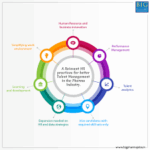Internal customer is a term that refers to the relatively underdeveloped concept of internal service provision within many organizations. While significant attention has been paid to external customers (both B2B and B2C), the relationship with internal customers—those within the company who rely on services or products provided by other departments or units—has often been overlooked.
The notion of internal customers has gained prominence as companies increasingly recognize the importance of optimizing internal processes and improving cross-functional collaboration. According to Hoschke (2001), internal services can be defined as services provided by one part of an organization to another without the direct involvement of an external paying customer. Examples of such services include administrative tasks, maintenance, repairs, IT support, and handling of operational goods.
Key factors in the development of a robust internal customer relationship include:
-
Defining Internal Services: Services provided within the company to support another unit’s operations, such as delivering goods or services, maintaining equipment, or administrative handling.
-
Integrating Operational Units: For optimal performance, it is crucial for different organizational units to align their goals and improve cooperation. By ensuring transparency of mutual dependencies and overarching processes, organizations can overcome internal competition and foster collaborative goals.
-
Performance Measurement and Feedback Systems: Hoschke (2001) recommends implementing group-related performance measurement systems that empower employees to influence the outcomes. These systems should cover the full range of a group’s tasks and performance, ensuring all aspects are measured and that the performance metrics are fair and valid, fostering greater engagement and collaboration.
In practice, some companies have successfully bundled internal services (e.g., facility management or IT services) into semi-independent profit centers that also serve external clients. This blurs the lines between internal and external services, encouraging internal service units to operate efficiently and in a customer-centric manner. However, there has also been a growing trend of insourcing certain services that were previously outsourced, highlighting the importance of an optimized internal service model.
Key Benefits of Internal Customer Relationships:
-
Increased Efficiency: Streamlining internal services can lead to more seamless operations, reducing friction between departments.
-
Enhanced Collaboration: When departments view each other as internal customers, it fosters a collaborative environment with shared goals.
-
Improved Profitability: Effective internal service provision contributes to a company’s bottom line by reducing delays, lowering operational costs, and boosting overall performance.
Implementation Considerations:
-
Define Roles and Responsibilities: Clear delineation of who provides what service and to whom ensures that all employees understand their contribution to the overall organizational success.
-
Foster a Customer-Centric Culture: Even internally, adopting a customer-first mentality can enhance service quality and interdepartmental relations.
-
Measurement and Accountability: Implement transparent, fair performance measurement systems to track the success of internal service initiatives.
Ultimately, the concept of internal customers underscores the importance of treating each employee and department as a key stakeholder in the organization’s success. By recognizing the value of internal services and focusing on effective internal customer relationships, companies can enhance their overall productivity, culture, and profitability.
« Back to Glossary Index





![15 Employee Offboarding Templates That Save Hours of HR Time [Free Downloads] 15 Employee Offboarding Templates That Save Hours of HR Time [Free Downloads]](https://i1.wp.com/www.hrcloud.com/hubfs/Header.png?w=150&resize=150,100&ssl=1)
